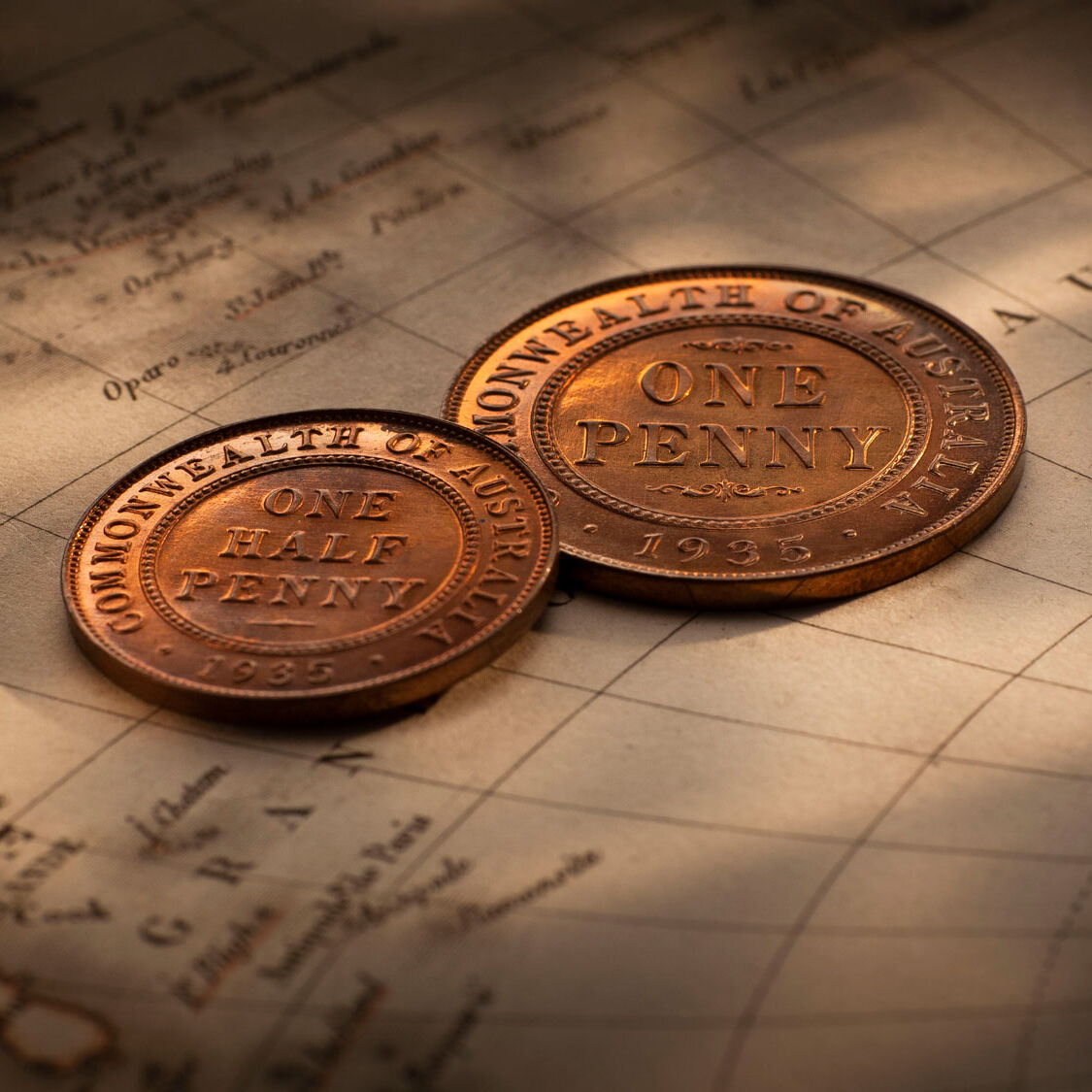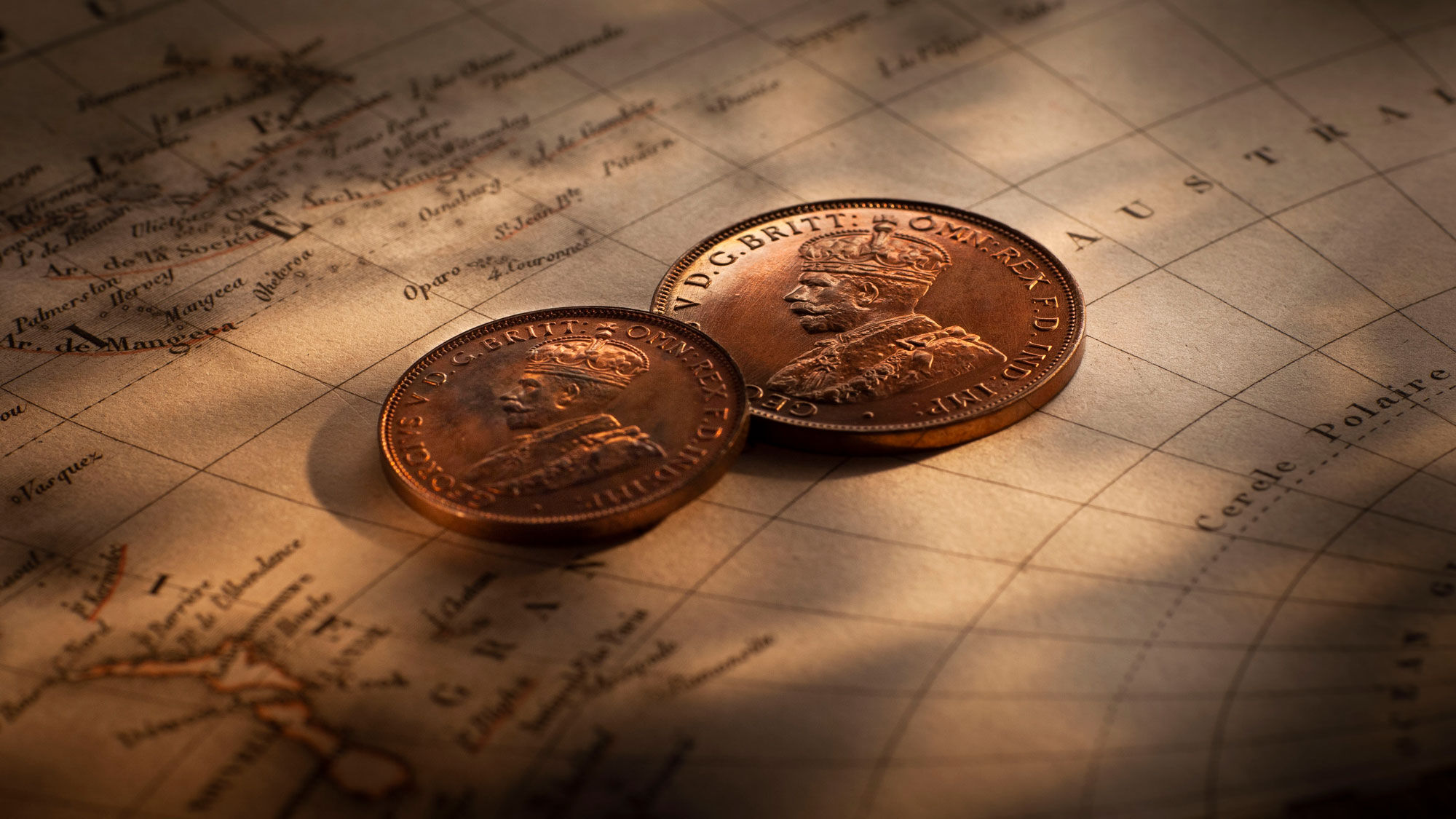Proof 1935 Penny and Proof 1935 Halfpenny matched pair


The pride and satisfaction associated with owning a special coin is markedly enhanced with knowledge of both the people associated with its production and previous owners through whose hands it has passed.
New Zealand numismatist, Henry George Williams played a key role in persuading the Melbourne Mint to issue proof coins on a commercial basis in 1935.
Williams was captivated by the golden-eye appeal achieved by the Melbourne Mint with their proof coppers and ordered 126 pairs.
Williams sold the majority of pairs into the advanced collector markets in the U.K. and the U.S, the very reason why the coins are so scarce in the Australian market.
That Williams did not request the minting of any proof silver coins in 1935 reflected his personal preference and his insight into the market, that demand for the bronze coins far outweighed that for the silver.
As the photos reveal, the strike detail and the finish of the coins is unsurpassed by any other proofs out of the George V era.
Historical letters confirm that the proofs of 1935 were struck from especially hardened blanks, and were struck twice with fresh dies in the presses. The lack of bag marks is consistent with the coins being made effectively by hand.
Natural attrition has taken its toll on the original mintage with many of the pairs broken up and individual coins sold-off.
We would expect to sight a pair of the 1935 proofs on the open market, perhaps once every year.
Now add the word "matched" and the words "fully brilliant mint red" for the chance to acquire a matched pair of Proof 1935 Penny and Proof 1935 Halfpenny at this quality level might come around once in a collector's lifetime.
As time passes the historic value and rarity of fine pieces increases. This fundamental dynamic is at the heart of rare coin collecting.
The copper proofs of 1935 hold a very special place in Australia's currency heritage. They were struck at the Melbourne Mint and were the third only proof issue struck and sold to collectors.
The first time an Australian mint offered proofs for sale to the general public was in 1927, with the striking of the Proof Canberra Florin.
While the mint had displayed a hint of commercialism in producing the Proof Canberra, the reality was that it was a one-off.
It did not establish a precedent for the issuing of proofs in a commercial sense. Government policy dictated that minting resources be applied to the striking of circulating coins for Treasury, rather than pandering to the whims of collectors through the regular issuing of proofs.
Collectors and dealer agitation culminated in the striking of a second commercial proof issue in 1934 and then one year later in 1935 with this proof penny and halfpenny.
The success of these issues paved the way for three more commercial proof issues in 1937, 1938 and 1939.
And more importantly paved the way for the proof coining programme taken up by the Royal Australian Mint in 1966.
© Copyright: Coinworks
